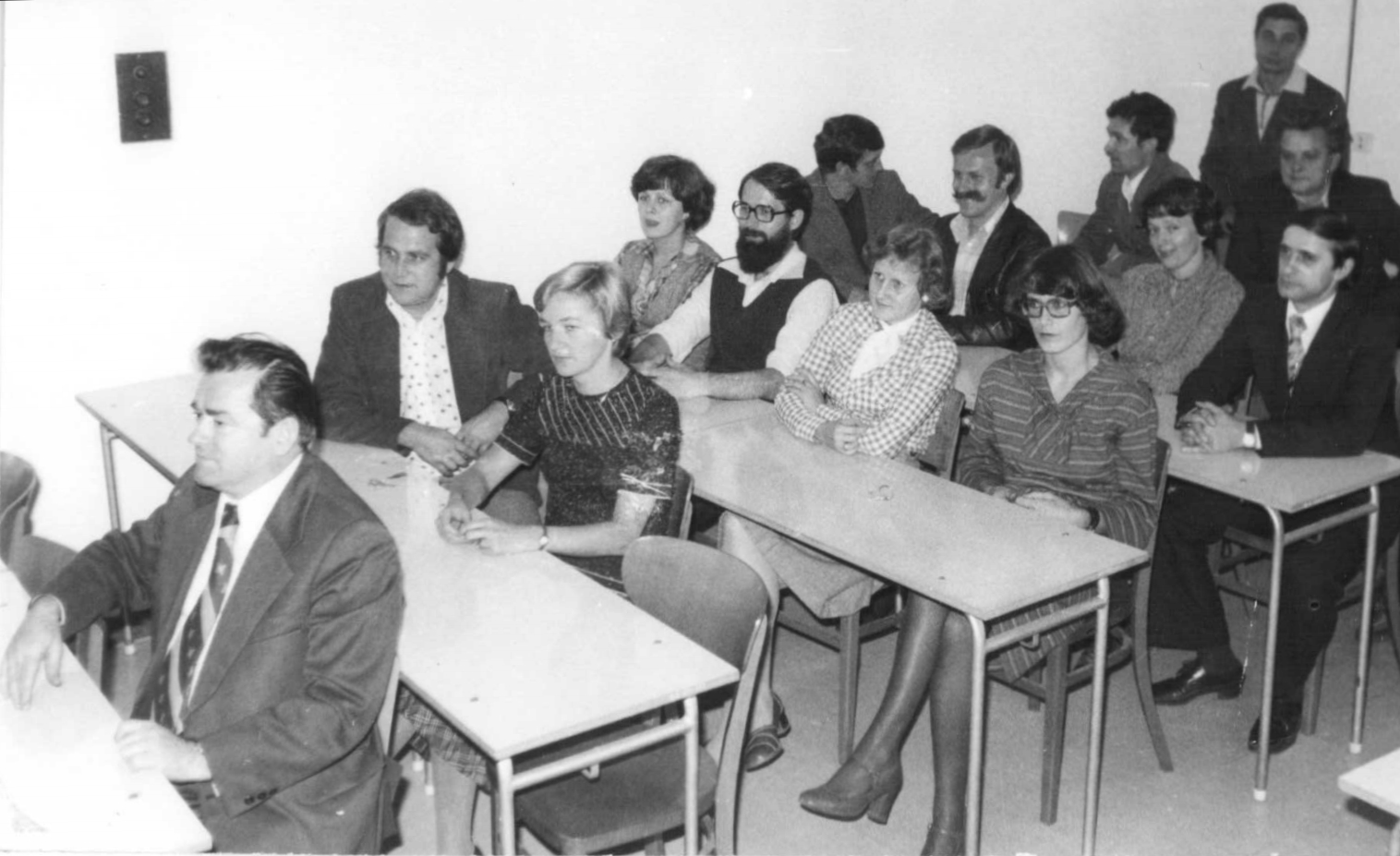The history of the Physics Laboratory II at the University of Gdańsk has its origins many years before the founding of the university. In 1953 the Higher School of Pedagogy, established in Gdańsk on 24 September 1946, opened the Department of Physics. Its rapid development and introduction of master’s studies necessitated the organisation of the Physics Laboratory II (next to the existing Laboratory I) in 1958.
In 1970 the University of Gdańsk was created through merging the Higher School of Pedagogy in Gdańsk with the University of Economics in Sopot. The Physics Laboratory II was then incorporated into the Department of Molecular Physics, headed by Prof. Antoni Śliwiński. Prof. Alfons Kawski became the head of the Physics Laboratory II and together with Andrzej Zieliński, a research technician, he undertook the task of re-organising and modernising the laboratory, adjusting the level of the experiments to suit the requirements of the university. In 1972, Prof. Antoni Śliwiński was appointed as director of the Institute of Physics at the University of Gdańsk. Prof. Alfons Kawski took over as head of the Department of Molecular Physics, where he remained throughout his tenure at the university until 1997 when he retired. Successive directors of the Physics Laboratory II were: Dr Edward Kuteń (until 1972), Dr Jerzy Kamiński (until 1973), Dr Grażyna Karcz – Jacyno (until 1975), Dr Piotr Bałuk (until 1987), Dr Jan Kukielski (until 1995). Andrzej Zieliński remained on staff as research technician of the Physics Laboratory II until his retirement in 2003, supporting the construction and modernisation of the laboratories experimental sets with great commitment and inventiveness.
The following photograph, taken at a seminar at the Department of Molecular Spectroscopy in 1997, shows all directors and teaching-research staff of the Physics Laboratory II until the year 1995. Over the last 35 years, students’ classes in the Physics Laboratory II were led by, amongst others, Prof. Dr hab. Marek Grinberg, Prof. Dr hab. Piotr Bojarski, Prof. Dr hab. Janina Heldt, Dr hab. Jerzy Kamiński, Dr hab. Aleksander Kubicki, Dr hab. Ryszard Drozdowski, Dr Jerzy Czajko, Dr Piotr Bałuk, Dr Maria Żukowska, Dr Małgorzata Kulesza-Grus, Dr Maria Alicka, Dr Dariusz Dyl, Dr Justyna Strankowska and Dr Anna Synak.
Irena Lenartowicz – Weyna also worked as a support technician in connection with the computerisation of some of the experimental sets in the laboratory and the introduction of computer analysis of measurement data between the years 1996 and 2008. Mirosław Behrendt joined as a service technician on 7 October 2002.
(1) – Professor Alfons Kawski; (2) – Dr Barbara Bartoszewicz and Dr Piotr Bałuk; (3) – Dr Maria Alicka, Dr Maria Żukowska, Dr Ignacy Gryczyński; (4) – Dr Jerzy Czajko, Dr Grażyna Korcz – Jacyno, Dr Benedykt Kukliński; (5) – Dr Jan Kukielski; (6) – Dr Edward Kuteń..
From 1 July 1995, Professor Alfons Kawski appointed Dr Maria Alicka as director of the Physics Laboratory II.
The Physics Laboratory II included 20 experimental stations. The Accreditation Commission consistently ranked the Physics Laboratory II as a nationwide leader but according to the staff, the experimental equipment was worn, outdated and inadequate for training future personnel capable of assimilating modern physics applications, new technologies and familiar with modern software. This was due to a number of factors : the high cost of purchasing advanced laboratory teaching equipment (beyond the financial means of the university), a lack of ministerial funds to purchase laboratory equipment for teaching and the inability to finance educational activities with research grants. Dr Maria Alicka sent the proposals for the project to modernise or build new suitable experimental facilities to the dean of the faculty and the Regional Fund for Environmental Protection and Water Management in Gdańsk. All applications successfully received funding and thanks to this, four modern experimental stations were built but the total amount received, around 60 000 PLN, was still much less than what was required.
In the years 2009 – 2011, European Union grants enabled the radical transformation of the Physics Laboratory II into the modern Didactic Physics Laboratory. Common funds from the two EU projects, “Physics for the Future” (Pomeranian Voivodeship Regional Operational Programme) and “A modern laboratory as a source of new knowledge” (Operational Programme Human Capital) as well as internal funding within the University of Gdańsk in the amount of nearly 4 million zloty enabled the general renovation of laboratory rooms, the purchase of new furniture, equipment and the latest generation of measuring apparatus. Information about both projects can be found under “EU projects”.
Currently, the Didactic Physics Laboratory at the University of Gdańsk has 40 advanced experimental stations and 33 computer stations with the latest software. A total of 47 experimental topics can be investigated in the laboratory – a list of these topics is included in “List of experiments”.
The pride of the laboratory includes : TM – 1000 scanning electron microscope from Hitachi, Aramis Raman spectrometer (one of only three in the world) and the FluoroMax – 4 TCSPC spectrofluorometer (which cannot be found in any other scientific laboratory in Poland) – both from Horiba Jobin Yvon, the Shamrock 500 diffraction spectrometer with an Andor iDus CCD camera, experimental sets for studying superposition and entangled states for microscopic states with single-photon detectors from quTools. Both of these devices, as well as our other experimental setups, include light sources with the best optical stability specifications for low-intensity quantum information processing, the latest generation CCD cameras and the most recent technology electronics. Thanks to this equipment, students can experimentally verify the theoretical knowledge of atomic and molecular physics, solid-state lasers, quantum mechanics and the latest applications of modern physics. They will acquire the skills necessary to make measurements with the apparatus using unique computer software and analyse the measurement data. Our students will be well-prepared to take up employment in fields such as: biotechnology, nanotechnology, computer science, materials science and quantum information.



